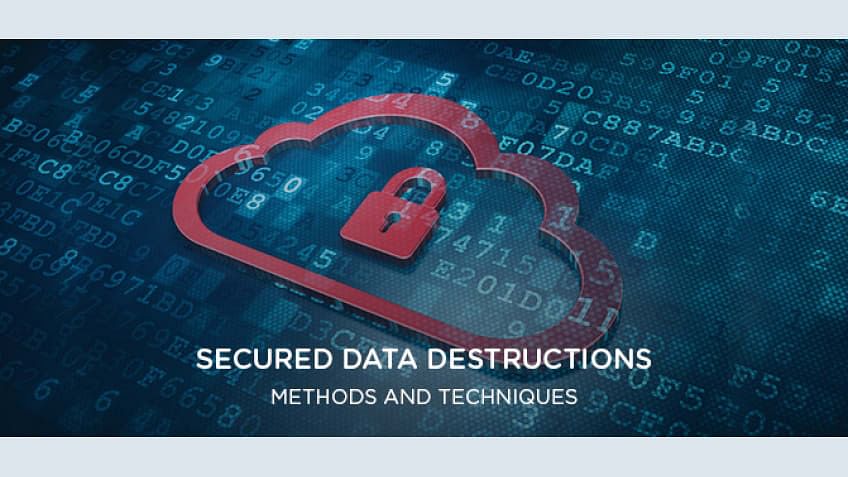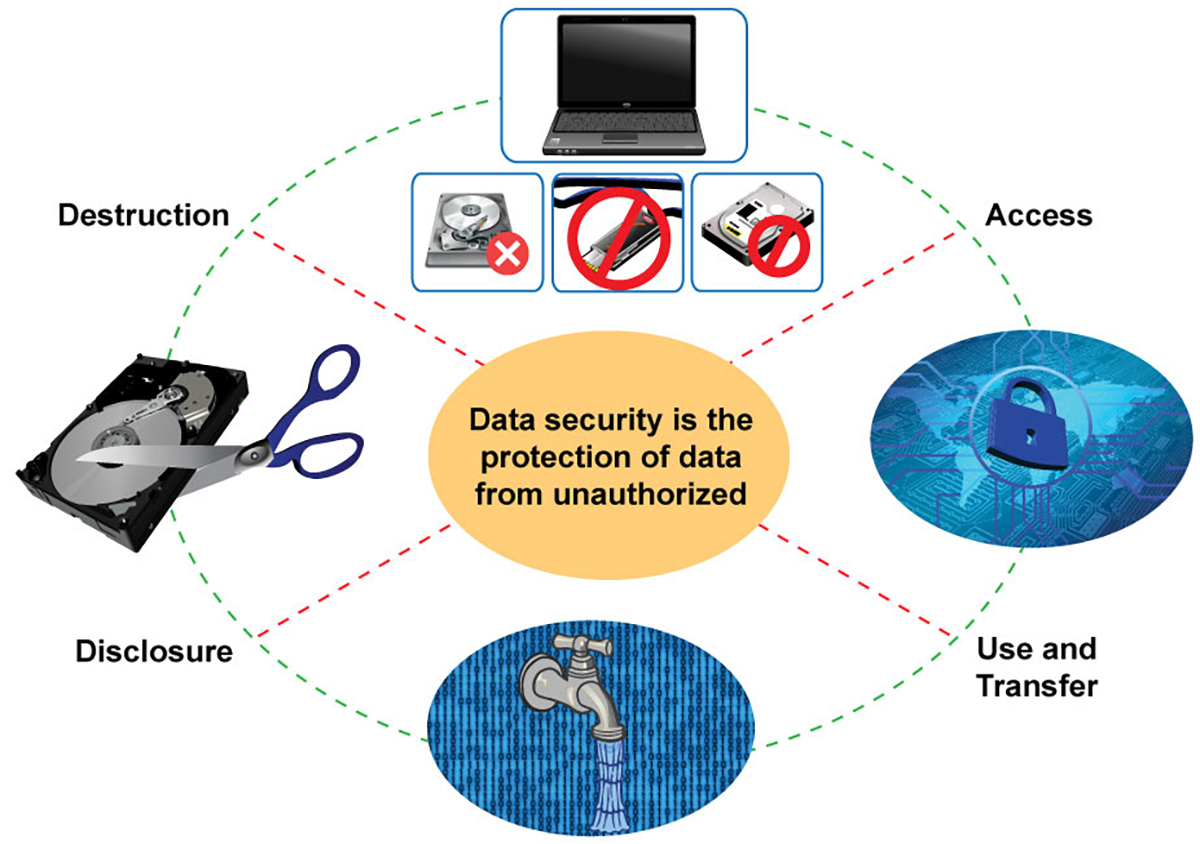Exploring the Importance of Data Destruction in the Context of Computer Security Services and Protecting Confidential Information
In a period where information violations are significantly usual, the relevance of efficient information damage can not be overstated. Organizations should adopt stringent steps to guarantee that sensitive information is not only protected throughout its lifecycle yet likewise decisively eliminated when no more required. The approaches utilized for data eradication, paired with compliance to legal standards, play a crucial function in maintaining discretion and count on. The implications of these techniques prolong past simple compliance, affecting a business's reputation and functional stability in the digital industry. What techniques can organizations carry out to enhance their information damage methods?
Comprehending Information Destruction
Data damage is a crucial element of computer system safety and security that entails the irreversible elimination of data from storage space tools to stop unauthorized gain access to and possible information breaches. In an increasingly digital landscape, companies encounter enhanced risks related to delicate details being poorly accessed or exploited. Efficient information devastation safeguards against these risks, making sure that personal dataâEUR" such as consumer information, copyright, and monetary recordsâEUR" can not be recouped after disposal.
Understanding the importance of data damage prolongs beyond simple compliance with regulative and lawful structures; it is necessary for keeping business stability and depend on. When data is incorrectly managed or inadequately destroyed, the effects can be extreme, consisting of monetary loss, reputational damage, and legal liabilities.

Techniques of Data Obliteration

One widespread method is information cleaning, which involves overwriting existing data with random patterns several times. This method renders the initial information irretrievable, making it a prominent option for organizations seeking to shield personal details.
One more approach is degaussing, which utilizes a powerful magnetic field to interrupt the magnetic domain names on storage tools, successfully eliminating the information. This method is specifically effective for magnetic media however is not relevant to solid-state drives.
Physical damage is an additional robust technique, entailing the shredding or crushing of storage space devices. This method guarantees that information recovery is virtually impossible, making it optimal for highly delicate info.
Lastly, file encryption can act as a corresponding approach to data elimination. By securing data prior to removal, companies can add an added layer of protection, making sure that also if remnants are recouped, they stay hard to reach without the decryption trick. Each approach ought to be picked based upon the degree of data sensitivity and the details safety and security needs of the company.
Legal Compliance and Information Safety And Security
Organizations need to browse a complicated landscape of legal demands associated with information protection, especially after executing approaches of data elimination. Different regulations, such as the General Data Protection Regulation (GDPR) and the Wellness Insurance Coverage Transportability and Accountability Act (HIPAA), impose rigorous guidelines on how companies should dispose and manage of sensitive information. Failure to adhere to these guidelines can cause considerable lawful consequences, including significant fines and reputational damages.
Information damage procedures must be diligently recorded to demonstrate conformity with suitable legislations and criteria. This documents not just acts as evidence of adherence to legal commitments yet also shows a dedication to securing sensitive info. Organizations should additionally develop clear policies regarding information retention and destruction timelines, making sure that data is not held longer than required.

Additionally, regular audits and analyses of information damage practices are vital to keep conformity and adapt to evolving this legal frameworks (data destruction). By proactively dealing with legal needs, companies can mitigate dangers connected with information breaches and show their dedication to data protection. Inevitably, prioritizing legal conformity in data devastation processes is not just a regulatory commitment, yet an essential aspect of a durable information security approach
Influence On Service Track Record
The track record of a company can be substantially impacted by its approach to information damage and administration. In today's electronic landscape, where data violations can take place anytime, the failing to properly throw away delicate info can bring about serious repercussions. Organizations that inadequately take care of information devastation threat subjecting personal consumer info, which not only breaches privacy legislations however likewise deteriorates depend on amongst stakeholders and customers.
A ruined credibility can cause reduced consumer commitment, as customers come to be reluctant to engage with a company that has actually demonstrated carelessness in shielding their data. Negative publicity surrounding a data violation can have a long-term effect, as potential customers may be prevented by the regarded absence of protection. This can lead to a direct decline in revenue and market share.
Furthermore, services that focus on information damage as component of their safety method can boost their online reputation by showcasing their dedication to safeguarding sensitive information. By adopting stringent data management techniques, companies can not just minimize dangers however likewise position themselves as trustworthy entities in their respective industries, thus strengthening their overall brand name photo.

Best Practices for Secure Disposal
Implementing ideal techniques for safe and secure disposal of data is necessary for alleviating risks related to information breaches and ensuring conformity with privacy laws. Organizations must adopt a thorough data disposal plan that lays out procedures for both digital and physical information damage.
For physical data storage space devices, such as difficult drives, shredding or degaussing is recommended to protect against data recuperation. Additionally, companies ought to keep a chain of wardship paperwork throughout the disposal process, making sure accountability and traceability of disposed things.
For digital data, making use of software application that abides by market criteria for see this data cleaning is crucial. This software application should overwrite existing data numerous times, making recovery essentially difficult. It is also crucial to verify the efficiency of the information devastation process with audits or third-party assessments.
Training staff members on secure disposal techniques adds one more layer of security, as human error can usually lead to information exposure. Routinely updating and evaluating disposal policies makes sure placement with evolving regulations and technological improvements. By carrying out these ideal techniques, companies can significantly reduce the risk of unauthorized data access and enhance their overall data protection strategy.
Conclusion
To conclude, data damage is an essential element of computer safety and security services that guarantees the protection of confidential information from unapproved accessibility. Applying reliable techniques of data removal, adhering to lawful conformity, and identifying the effect on service credibility are vital components of a comprehensive information protection method. By embracing best techniques for safe disposal, organizations can foster trust fund with customers and protect sensitive information, eventually adding to a more safe and secure digital landscape.
In an era where information breaches are increasingly usual, the importance of effective information destruction can not be overemphasized.Data destruction is an essential element of computer protection that involves the irreversible elimination of information from storage Discover More Here tools to stop unauthorized gain access to and potential data violations. Organizations ought to additionally develop clear plans concerning information retention and damage timelines, making certain that data is not held longer than necessary.
By proactively attending to legal demands, companies can reduce threats associated with data violations and demonstrate their commitment to information safety and security (data destruction). Inevitably, focusing on legal conformity in information destruction processes is not simply a regulatory responsibility, yet a fundamental element of a durable information security method
Comments on “Data Destruction Solutions: A Key Element in Your Cyber Security Method”